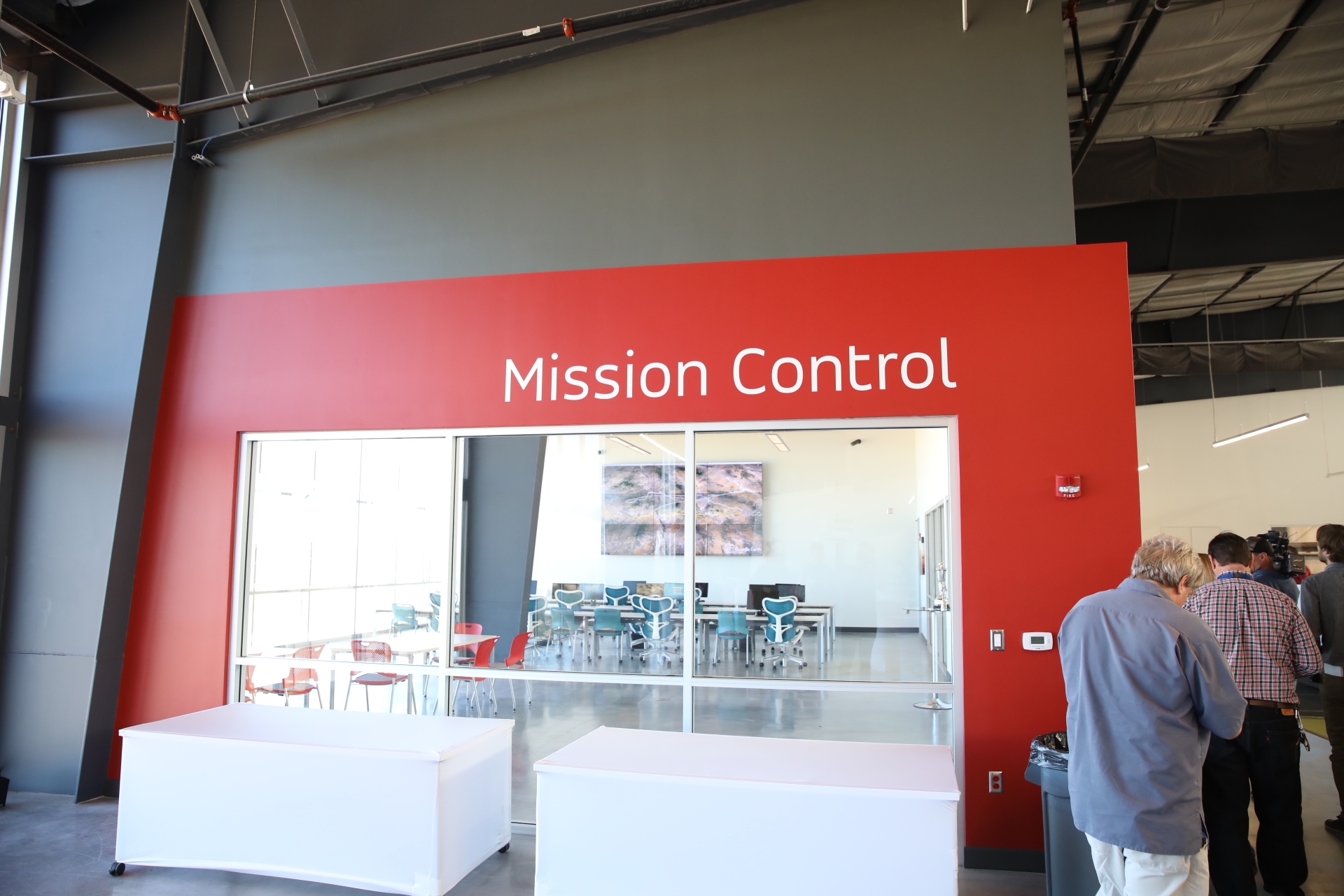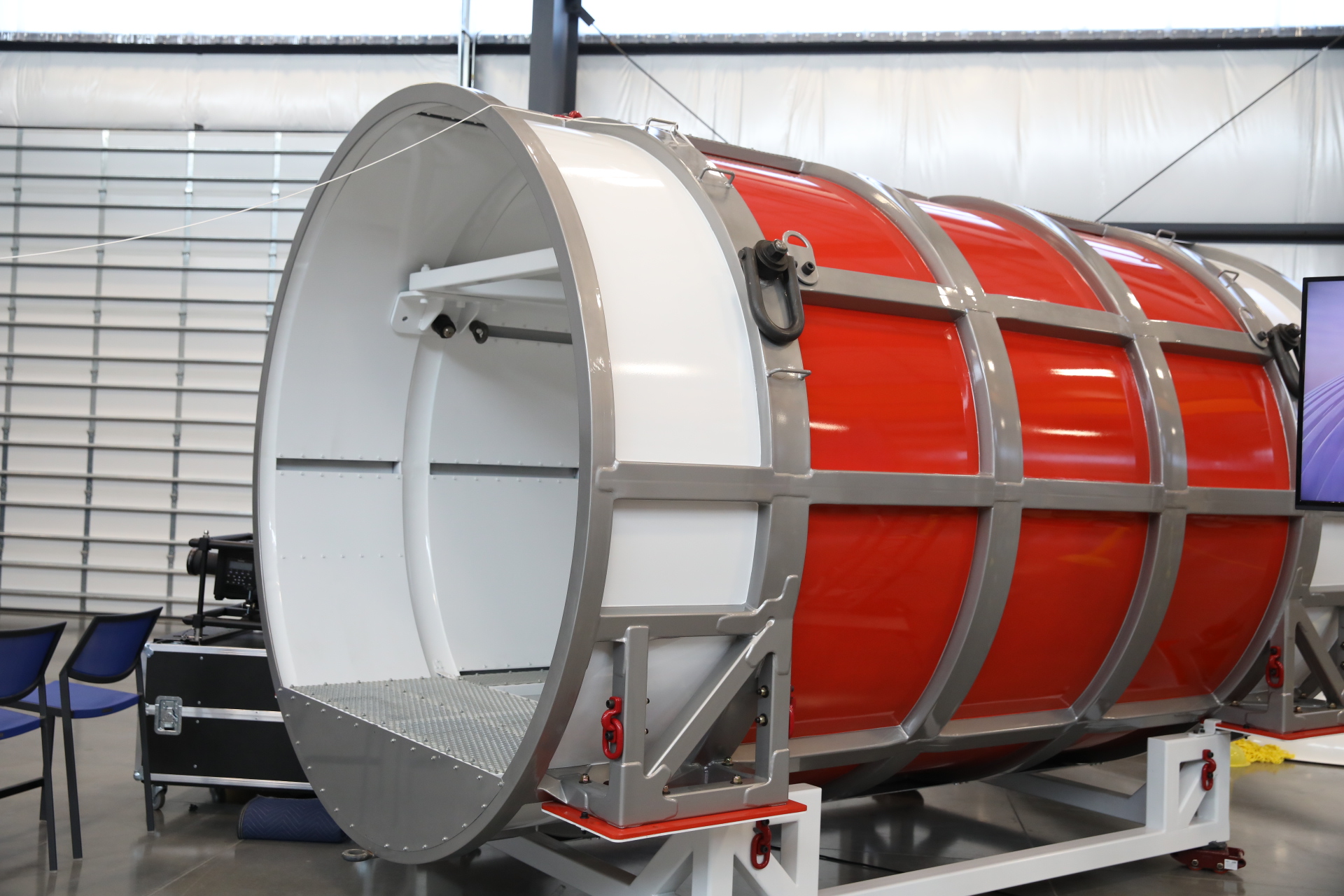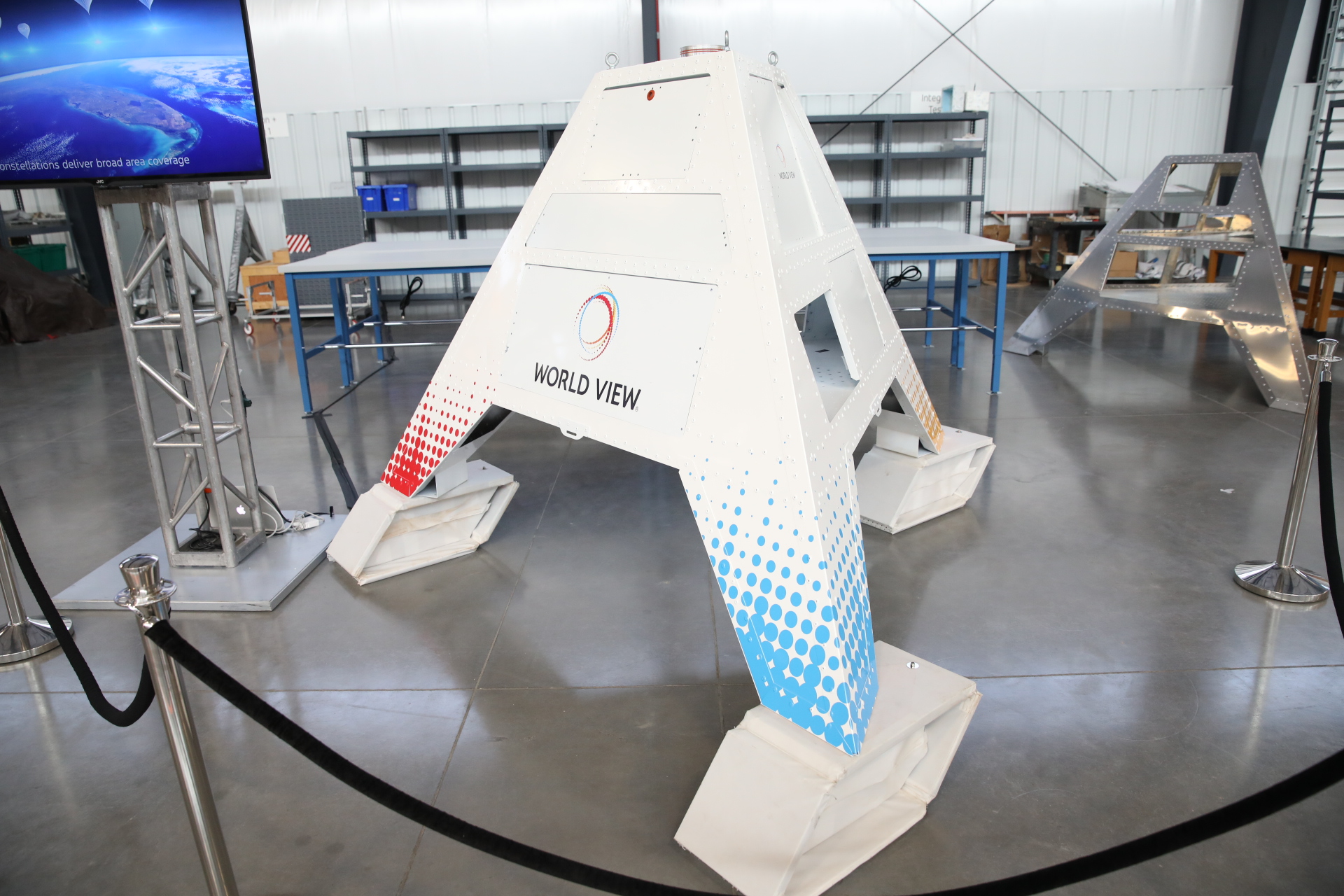At World View’s new headquarters in Tucson, Arizona, the paint is barely dry on a gleaming new structure located near the airport, and just down the road from defense contractor Raytheon.
The facility, and the site, dominate the landscape, and reflect the enormity of World View’s main goal, which is nothing short of carving out a brand new and unique market for commercial spaceflight operations.A new frontier
CEO and co-founder Jane Poynter explained in a press conference that World View is, at heart, a stratospheric flight and exploration company. This means that it sends gas-filled balloons to the very edge of space, complete with payloads that could include imaging and sensor suites. Others have done this in the past, but the challenge has been in doing this in a way that will allow the balloon craft (called “stratollites” by World View) involved to stay in a relatively fixed location — a game-changing capability for upper-atmosphere operations.
Poynter noted her company is entering a market where there’s been a lot of excitement lately — commercial spaceflight. But while there’s been a lot of activity from private players, including SpaceX and Blue Origin, Poynter said that the stratosphere, where World View is focused, has been traditionally ignored as a business opportunity. Yet it presents a considerable one, she says.

Being able to hover over a specific location for extended periods could have tremendous benefits on the battlefield, she notes, but also for first responders and in research settings. Poynter brought up hurricanes as an example. Aeroplanes and UAVs often fly over hurricanes, getting pinpricks of data, but these result in inaccurate predictions regarding storm system movements, because they’re incomplete.
You could, in theory, move people out of the way of a storm at huge cost when they don’t need to be moved, just because your predicted trajectory is off. A stratollite positioned over a hurricane over a longer period of time can provide an understanding with great accuracy of the path it will take, which can prevent unnecessary evacuations, or can help evacuate people who otherwise would not be evacuated, Poynter suggested.
Likewise, you could imagine positing a constellation of stratollites over high-risk fire areas, offering very early detection of wildfires via stationary observation on a sustained basis.
The spaceport
The spaceport itself is a large, impressive site. It’s “the only building in the world built for the sole purpose of stratospheric flight,” Poynter says. The building is 600 feet long, in order to house manufacturing tables where we make our large high-altitude balloons. These balloons are laid out on these long tables, which run to 1/10th of a mile at their longest.
The building also provides a dedicated mission control for balloons and for stratollites, which looks a bit like a cross between a small university classroom and the NASA mission control rooms you’re probably familiar with from television and movies. This sits next to a 100 foot-tall tower, which allows World View to service its balloons and prepare them for launch.

World View conducted a nationwide search to identify a location to place this facility. Both Poynter and her CTO and co-founder Taber McCallum already had roots here with their previous company, but Poynter says it was a business choice that made the company stay here. They entertained “exciting offers” from Florida and New Mexico, she said, but it was this facility, with co-located spaceport and manufacturing, along with proximity to the airport, that made it happen.
The whole thing was also itself a feat of engineering. It was built in just over a year, a pace Poynter says is “lightning speed for a facility like this one.” Former astronaut and co-founder Mark Kelly also added that Tucson has “great weather for these kind of operations,” which is key because the biggest threat to successful launches for World View’s balloons is high winds.
Putting people in pods
Kelly shed some light on why the stratosphere has been such a neglected area in space exploration and travel. There’s not enough air for airplanes, and you also can’t put a traditional spacecraft there and keep it there, he said. But stratollites thread that needle, and this has potential not just for experimentation and remote observation — it could spark a new tourism industry.
Kelly said that this isn’t just about flying stratollites, but about flying people, too. World View is pursuing this opportunity through an experimental program it calls “Voyager,” which will eventually have a capsule with the capacity to hold six passengers and two crew (plus a washroom) and take them up via balloon, too.
This would enable “everyday people, tourists, the ability to see our Earth as a ball floating in the blackness of space,” Kelly said. That’s a transformative experience, he said, and I lack the personal perspective to suggest the former astronaut could be incorrect about that.
It’s not going to be open to everyone, of course, but Kelly said they could potentially offer thousands of people worldwide the ability to go to space, and he added that World View could potentially do this in many spots around the world — eventually. It’ll be expensive, of course: The starting price for tickets is around $75,000 right now, and Poynter says that could get more expensive because of demand in the near term. Eventually, though, it hopes to get it down to $50,000, or even $25,000 through economies of scale.

How soon could World View start putting people up in space? There’s no definite timeline yet, but it hopes to fly an aerodynamic test vehicle this year that will show how their future capsule will behave in real-world conditions. Kelly also told me that it’s possible they could be flying their first missions with human pilots on board within the next couple of years.
Modern solutions for old problems
Co-founder and CTO Taber McCallum explained why stratollites are possible now, but haven’t been used or created before. He said that they got the idea for commercializations of this tech when they were working on Alan Eustace’s record-setting free-fall jump in 2014.
“We were working on the Alan Eustace flights and we started getting a bunch of incoming requests to fly payloads and satellites,” he said. “We thought the market must’ve been already saturated, but the calls kept coming in and we got the NASA contract.”
McCallum said that it was like ballooning had been in stasis — no one had applied modern battery tech, modern navigation systems or solar energy improvements to the actually very old area of ballooning. Combining aspects of all these improvements, World View found a way to use air as ballast, and change the buoyancy of the crafts on demand, which let them ride stratospheric wind patterns to maintain their position by altering their altitude.

The World View vehicle is solar-powered, so there isn’t any inherent limitation to the duration it can stay in the air. It’s also easy to bring it back and swap payloads and then redeploy it. It can land so softly that fine instrumentation survives missions unscathed and can be used again, something that’s generally unheard of in spaceflight.
In fact, co-founder Alan Stern explained that balloons remove many of the constraints we’re used to with spaceflight in general. You can fly very large masses, whereas with rocket launches you’re often micromanaging weight. You can fly human experimenters along with research, eventually, and you don’t have to worry about zero G, which is a challenge for a lot of space-based experimentation.
Where stratollites excel
Stratollites also operate above the altitude where you’re prevented from doing infrared astronomy, Stern added. You can directly sample the stratosphere, which is useful for monitoring things like the impact of environmental damage. You can use very small optics for imaging, which are inexpensive, since don’t need large expensive optics as you do when you’re farther away — like in space.
Stern compared the potential of World View’s tech to the revolution caused by personal home computing, and how we could never have forecasted in 1977 all the PC use.

World View says it has already run north of 50 missions, and has clients including Northrup Grumman, Harvard, Arizona State University, The Department of Defense and NASA. Earlier this month, in fact, it formed an important partnership via a new flight with Ball Aerospace. Ball sent up optical instruments with resolution good enough to track individual vehicles on the ground from an altitude of 77,000 feet, which has obviously interesting implications.
The company’s next step is to start actually launching from its new spaceport and HQ, something it says will happen soon. The launchpad is ready and waiting; it could soon be the point of departure for tourists looking to touch the sky.































Comment